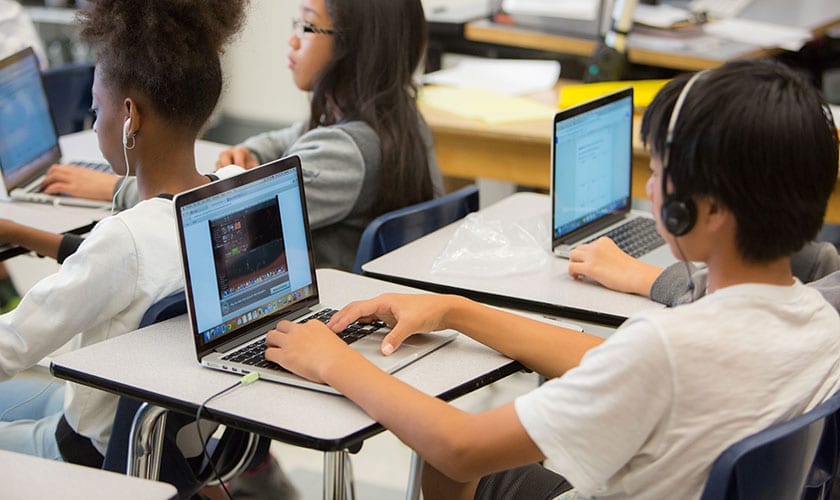
California’s Mountain View Whisman School District partners with ThoughtExchange to engage more people and come together around school boundary changes
Located in the heart of Silicon Valley, Mountain View Whisman School District (MVWSD) is a district of diverse people who regularly come together around their differences through conversation. Despite that culture of open conversation, talking about how to best change boundaries to make way for a new elementary school proved to be a significant challenge.
MVWSD had tried to change boundaries twice before, first using a board committee and then a task force appointed by the interim superintendent, but met with strong resistance from a divided community.
Their traditional engagement methods weren’t reaching enough people or letting them hear beyond the loudest voices to learn what was important to the whole community.
Getting beyond the loudest voices
When Superintendent Dr. Ayindé Rudolph came onboard and made the district’s third attempt at changing boundaries, he knew he wanted to take a different approach.
“When we went to draw the boundaries, we wanted to create an environment where people feel good about the process and feel their voices have been heard,” Dr. Rudolph says.
He first tried holding a series of public meetings at each of the district’s eight elementary schools. After paying a total of 80 staff to prepare for and attend those meetings, about 150 people attended. And those who did show up were vocal about a single topic, having their kids grandfathered into their current schools.
“We decided to go with ThoughtExchange because we recognized our traditional methods weren’t reaching far enough,” Dr. Rudolph says. “It immediately seemed like it was the best time to try this out, on a topic that had the potential to rip the community apart. We wanted to hear from everyone: Our silent majorities and our most vocal opponents and supporters. We wanted to give everyone a chance to share their thoughts.”
"I was able to synthesize, through ThoughtExchange, the hottest topics in the community and also other things we should consider. That really helped the board make an informed decision about which boundary scenario they wanted."Dr. Ayindé Rudolph, Superintendent
Engaging more people in less time
Dr. Rudolph and three people from his team worked with ThoughtExchange to reach more than 700 people and confidentially ask them what they liked and disliked in two potential boundary options. Those 700-plus people shared more than 1,400 thoughts and assigned nearly 35,000 stars while reflecting on thoughts shared by others.
“That shows the power of ThoughtExchange,” he says. “We reduced man hours and increased participation. And ThoughtExchange allows us to drill down to every single school or participant group to hear their voice and give them a venue to share their thoughts in a non-confrontational way.”
When asked how it felt asking his community open-ended questions on such a contentious topic, Dr. Rudolph said working with the ThoughtExchange team gave him confidence.
“The ThoughtExchange team was very good about helping us craft the questions in such a way that it would get us to our outcome,” he notes. “We felt we were in really good hands and we knew exactly what the end result was going to be.”
Data-driven decisions
In their previous attempts at changing boundaries, MVWSD had seen a “visceral reaction” from the community. Through his partnership with ThoughtExchange, he saw a much different result.
“Everyone was expecting an angry mob to show up with pitchforks and say ‘How dare you?’. Instead, what we got was a process where people felt like their voices were heard and they were acknowledged.”
Along with including more people in a two-way discussion, Dr. Rudolph said the most important result of his exchange were the rich data and visualization tools he received to interpret the results.
“The data and heat maps let us pinpoint the concerns of particular communities,” he says. “We could see how many people responded, what their thoughts were, and have that ready to talk about at a board meeting,” he says.
“In our presentation, we were able to delineate the concerns of particular groups. I was able to synthesize, through ThoughtExchange, the hottest topics in the community and also other things we should consider. That really helped the board make an informed decision about which boundary scenario they wanted.”
Share this Story!
